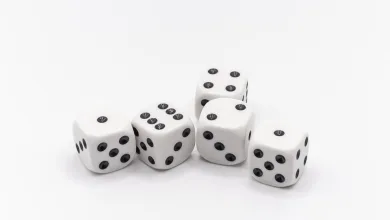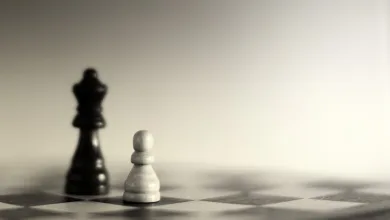Sony’s State of Play and Level-5’s To The World’s Children – This Week in Games
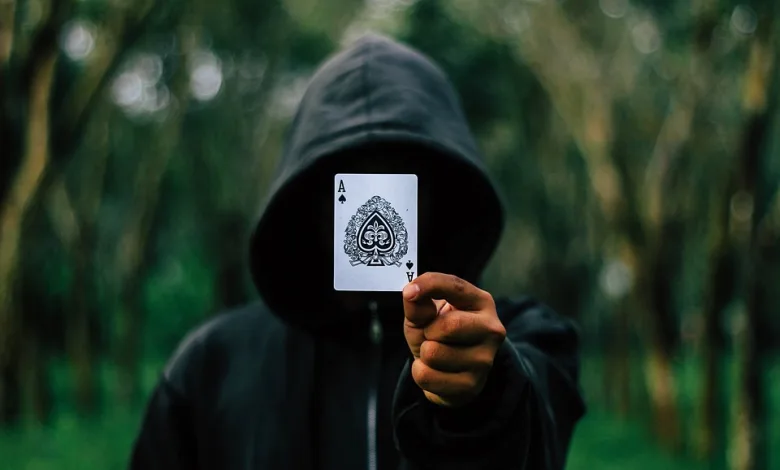
Welcome back, folks! I was surprised by the reception to last week’s column; we had more than a few folks who responded positively to the Freedom Wars news. That makes me happy! I can’t cover a lot of these obscure games getting revivals, but I live for seeing folks excited to see their obscure favorites getting brought back. More than getting invited to fun press events where I can meet other writers or interview industry people, I just like seeing people excited about the weird games that speak to them. I hope I get to share more good news like that with you in the future. Also, I’m glad my “Fargate” joke from last week amused some folks; my reference points are a very bizarre mix of Japanese kids’ shows, Pedro Almodovar and Rainer Werner Fassbinder movies, and vocal stims from Vinny Vinesauce. It’s good to know I’m not completely inscrutable to people.
The news of my colleague Nick Dupree’s passing has been… a lot to process. I worked with him for two years at This Week in Anime, and working with him was always a delight. His insight was whip-smart, and his humor was boundless. I look back at our consecutive columns covering Twittering Birds Never Fly and Stranger by the Shore to be some of our finest work, and I think he’s the only other person who could have matched my freak for discussing SSSS.Dynazenon. And hey, I’m still proud of the back-and-forth we had with our Faraway Paladin column. It’ll be rough, trying to watch Macross Delta without him around…
This is…
Let’s Talk A Little About Nintendo and Pocketpair…
The news about Nintendo taking Pocketpair to court over patent infringement definitely roused a few hornets’ nests. There are a lot of discussions going on, but I think it’s worth picking a few of them apart as I’ve got some complicated Feelings™ about them.
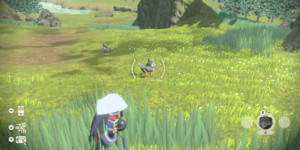
©2022 Pokémon. ©1995–2022 Nintendo/Creatures Inc./GAME FREAK inc. Pokémon and Nintendo Switch are trademarks of Nintendo. ©Nintendo.
At the time of writing, Nintendo hasn’t yet publicly announced the patents they’re litigating over; the common assumption is that the patents in question pertain to how Pokémon catching works in Pokémon Legends: Arceus (aiming and throwing a device at a Pokémon in real-time while an indicator throws up an estimated rate of success). A lot of people really don’t look kindly at Nintendo having patented the mechanic, let alone that the patent is exceedingly recent (it was only signed into effect earlier this summer, notably after both Legends: Arceus and Palworld released). Granted, most of these patents are themselves divisional patents of a “parent patent” that had been filed back in December 2021 (which is apparently a standard industry practice). There’s an interview from 404 where Serkan Toto, CEO of Kantan Games, alleges that Nintendo is “patent trolling,” and points to several other mechanics that Nintendo has patented (like showing the silhouette of a character through an obstacle, such as in Super Mario 3D World).
The notion of patenting gaming mechanics is undeniably scummy. I mentioned in last week’s column that there have been other times mechanics have been patented in the industry, leading to everyone else having to tread on eggshells; look no further than Sega patenting the first-person view from Virtua Racer and Namco patenting the use of minigames during loading screens. But that’s where the discussion starts getting weird for me. I think this is a great opportunity for people to talk about the overarching problem of mechanic patents restricting game development, which a lot of people allege. But the vibe I’m getting from people is that it’s bad that Nintendo has patented mechanics from Pokémon because it’ll prevent other developers from creating other games about raising monsters; the discussion hasn’t really moved past that point.
Let’s break this one down for a minute. For starters, it’s important to notice that Nintendo isn’t alone in patenting game mechanics; it’s worth pointing out that in terms of patents held, Bandai Namco and Konami both outstrip Nintendo, with Square Enix coming in just behind Nintendo. Does that justify Nintendo holding patents? No, it doesn’t. But that’s the context that a lot of people seem to be ignoring. If the practice of holding a gaming patent is such a major issue for the industry, it behooves folks to take a wide look at the industry at large—not just the one company on people’s minds at the moment. Sure, Konami and Bandai Namco aren’t suing Pocketpair—but Konami alone also has more than twice the patents Nintendo does.
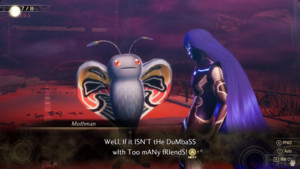
© Atlus. ©SEGA.
For another, a lot of people seem to frame this as Nintendo wanting to curb the market on monster-taming games, specifically, as “Nintendo doesn’t want competition” and “they want to patent a whole genre.” And I really don’t buy that. Let’s ignore that the Switch is a regular hotbed for taming games; any enterprising tamer can hop on the Switch and get Shin Megami Tensei V: Vengeance, Monster Rancher 1 & 2 DX, Ultra Kaiju Monster Rancher, TemTem and Cassette Beasts, right now. For folks who haven’t actually played these different games… note that all of them do a lot of heavy lifting to differentiate themselves. TemTem goes for a turn-based system, like Pokémon… but its battles also incorporate Stamina meters for your TemTems, changing the rhythm of combat. (Also, they use TemCards as an item for catching other TemTems.) Cassette Beasts stands out for having a very novel twist on “capturing,” wherein you “record” enemy data as an action using cassette tapes—but since in Cassette Beasts, your human characters turn into the monsters, “recording” new ones requires you to spend a turn in your vulnerable Human form, wherein taking damage lowers your chances of a successful recording. There’s also a fun mechanic where you can “fuse” your monsters together during battle to make a unique form, which insofar as I know is unique to Cassette Beasts. Shin Megami Tensei allows you to earn new monsters via Negotiating with them during battle. It might cost you items, health, MP, or money as they request, or the monster might even join you at random because they lost an arm-wrestling match against you (read: your Strength stat is higher than theirs), which they might also initiate at random. Monster Rancher famously has you generating monsters from physical media or from “codes” you generate from combinations of letters and symbols. Dragon Quest Monsters has monsters that either join you at random at the end of a match or join you after you’ve “scouted” them during battle. I’m going extremely surface-level here, but you can see that there’s already a ton of creativity with regards to how you can capture monsters in these games.
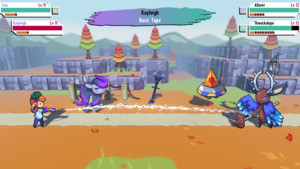
© Bytten Studio, Ltd.
About the only problem I see is that people aren’t allowed to do… the same exact thing that Pokémon does. It feels like people complaining that they can’t make a platformer anymore because they can’t make the protagonist a squat plumber in overalls from a borough in New York City, or how people can’t make stealth games anymore because you can’t hide under a cardboard box. It’s still possible to work within the confines of a patent if you have half an ounce of creativity.
To go a bit further: an indie game I’ve been enjoying on and off is Mike Inel’s Nude Byte; it’s clearly inspired by Splatoon, given it’s a squad-based arena shooter featuring a pair of twins as the hosts/commentators for each match. It even manages to incorporate a twist on Splatoon‘s concept of claiming space in the arena by shooting the floor to change it to a corresponding color (which makes it easier for you to move around, recharge your weapon energy, etc). But the similarities end there; the available weapons are different, and character abilities for traversing maps all vary (dodge-rolling, teleporting, Vanquish-style power-sliding, and wall-jumping). Maps aren’t about claiming territory with your color, they’re about surviving waves of enemies for as long as possible. The Splatoon influences might be there, but they’re all iterated on. Granted, the actual problem Inel might face is that all of the weapons are based on cards featuring licensed characters, but he’s actively working on changing all of those designs to legally distinct characters.
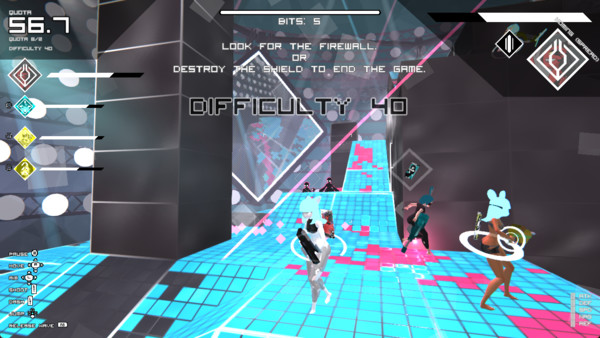
© Mike Inel
So I ultimately agree that squatting on patents is a pretty bad issue, but it’s not because Nintendo is doing it; it’s because it’s ultimately a greedy and shortsighted thing to do. I mentioned being able to evade patents with some creativity above, but I do acknowledge it’s a bit hard to work around something like Warner Bros.‘ patent on the Nemesis system. But the conversation can’t just stop at “Nintendo is wielding its patents like a cudgel”; if we want to actually do something about patented gaming mechanics, and we should, we need to talk about everyone doing them—including the publishers and developers we like. People need to still be angry about patents this time next year when the dust from Nintendo‘s lawsuit against Pocketpair has settled while Konami maintains a patent on skill-based roulette machines, or while Sega maintains their patent for varying quest rewards after a game’s update based upon your character roster. I know if I were a game developer, I’d be worried about making what I thought was a novel interface method for a game and found myself in hot water because it turned out Bandai Namco held a patent for it. (Put a pin in that one, for now.)
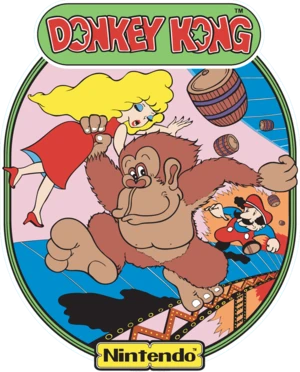
© 1981 Nintendo Arcade Archives Series Produced by HAMSTER Co.
It’s really, really easy for folks to frame Nintendo as draconian because they’re very public about protecting their trademarks. Wiser folks than myself have pointed out that Nintendo‘s old legal battle against Universal Studios over Donkey Kong allegedly infringing on King Kong (which Universal had previously argued in a suit against RKO Pictures was a public-domain story) had shown Nintendo the dangers of their trademarks not being properly protected. As big as Nintendo is, they don’t have the money Sony or Microsoft might have, given that Nintendo only releases games and consoles and isn’t, say, a massive multinational computer corporation, or a major international corporation with interests ranging from consumer electronics to music licenses to film studios. Nintendo‘s IP are their business, and they’re in big trouble if their grasp on The Legend of Zelda or Metroid has a single weak spot. People get upset at Nintendo sending C&Ds to people who, say, make unauthorized remakes of Metroid using assets from Metroid Zero Mission, and I’m not going to pretend that irritation isn’t merited. But Nintendo‘s history of dropping the full weight of their legal hammer seems to be reserved for people who are that egregious in their actions. Gary Bowser went to prison and owes Nintendo $14 million… after earning about $4,000 a month while living in the Dominican Republic as tech support for Team Xecutor, whose SX/OS bricked your console if you did something Team Xecutor didn’t like. Nintendo famously went after Tropical Haze, the creators of the renowned emulator Yuzu, in a case that endangered emulation on an industry-wide scale. It’s also alleged that Yuzu was distributing ROMs of Nintendo software behind the scenes, which was allegedly the thing that actually got them in Nintendo‘s bad graces. These aren’t cases where the outcome is as cut-and-dried as “Nintendo is the bad guy” or “the people that got sued are the bad guys,” the same as the case with Nintendo and Pocketpair, but it’s also clear that the folks Nintendo brought out the big guns for were people who weren’t acting in good faith.
Essentially. Palworld JP released a statement that framed the lawsuit as Nintendo vs Indie devs and that they were going to fight it “for us indies, right guys?”.
The reaction from the Japanese scene has been more or less “we’re not with them” or “you don’t speak for us”. (1/2) https://t.co/V4LZs6mrV5 pic.twitter.com/4PXhB5FJQk— IceFairy (@richard_effendi) September 20, 2024
And that brings us to the other half of this subject: Pocketpair. In a tweet dated September 19th, Pocketpair released a public statement on their Japanese Twitter profile concerning the impending lawsuit. Notably, Pocketpair refers to itself as “a small indie game development company based out of Tokyo,” and that they will “do [their] best […] to ensure that indie game developers are not hindered from free thinking.” The response on behalf of the Japanese community has been, to sum it up, negative; Pocketpair’s “We’re all in this together!” attitude has been met with a resounding “‘We’?” followed by some incredulous laughter. The reasons vary; many look at Pocket Pair’s deals with both Microsoft and Sony askance. Pocketpair famously worked with Microsoft for extra help in establishing servers and QA testing shortly after release, and later partnered with Sony to establish Palworld Entertainment, a multimedia venture for expanding Palworld as a brand into multimedia and other branding opportunities. And remember: Palworld is still an early-access title.
Other Japanese users have pointed to Pocketpair’s attitude in the past; one Japanese user pointed to Pocketpair’s president’s statement on how “Freedom means responsibility” or Pocketpair’s own admission that any potential infringement should be contested in court. Others have also pointed to Nintendo’s Indie World program as proof of Nintendo‘s support of indie developers in the past, promoting titles from indie studios in a format similar to their Nintendo Directs. It’s also here that we can remove that pin from earlier; as others have also pointed out Pocket pair’s tendency for copying games, such as with Never Grave (which eerily seems to mirror Hollow Knight‘s aesthetic) or Craftopia (which seemingly borrows liberally from The Legend of Zelda: Breath of the Wild). It’s one thing if you just happen to make something that infringes on established patents; it’s another when a glance at your career (not to mention your own president’s statements) reflects a tendency to look over your classmate’s shoulders at their test papers.
The near-unanimous reaction from the Japanese community appears to be that Pocketpair dug their own grave. Famously, Touhou creator ZUN issued a vague response to Pocketpair’s “indie dev” tweet with “I guess I’m a doujin game creator after all,” presumably between swigs of beer (and seemingly refusing the title of “indie dev” in the process). I’ve seen a few folks from the United States who are rather astonished at the reaction (and a few who think this means Japan is “bootlicking” for Nintendo and needs to be “rescued from itself, lest it be overrun by acronyms”). Let’s examine where this is coming from.

As noted by people wiser than myself, the Japanese constitution doesn’t include parody law as the United States of America’s constitution does. This is part of why a lot of Shonen Jump manga will blot out another recognizable character’s eyes, even if it’s someone from something as well-known as “Dr*g*n B*ll” that ran in the same magazine. Part of it is also a matter of respect (they don’t want to do anything that might be constituted as disrespectful to the other mangaka). All of this, many have noticed, is seemingly at odds with Japanese doujin culture. While in the U.S., “doujin” is almost entirely synonymous with “erotic manga based off of known IP,” it’s important for people to internalize that “doujin” refers to anything produced by amateurs. This can include music, prose, photography, manga, video games, or anything else. Famously, Type-Moon started out as a doujin studio with their release of Lunar Legend Tsukihime in 2000; they transitioned into being a commercial studio after Tsukihime‘s success, which has led to Fate/stay night becoming a massive multimedia franchise with anime, full-length feature films, manga, and a worldwide mobile game. That said: a lot of doujin is based off of recognized IP, which many mangaka might produce under pseudonyms. Notably, rights holders in Japan look the other way, but doujinka still operates under a code of ethics. Mangaka only publish a limited number of doujin manga, say for the current season of Pretty Cure or the recent flavor-of-the-month Fate/Grand Order heartthrob. They’ll normally only charge enough to make back whatever they spent printing the books, and once the few remaining unsold copies have been sold through consignment stores like Toroana or Melon Books, that’s it. Many doujinka are very reluctant to reprint older books. As a side note, this has led to some doujinka being resentful of anime fans in America for scanlating doujin online; they see themselves as responsible for the doujin in question getting uploaded to the Internet, where they can’t control its spread. (And now you know why so many doujin have big disclaimers written in English asking people to not upload doujin to the Internet.)

© Houbunsha, Yen Press, Aki Hamaji
While doujin can open the door for a lot of amateur mangaka or game developers to go mainstream, a lot of it is specifically done “for the love of the game,” as it were. Plenty of established mangaka still publish doujin during Comiket—famously, longtime mangaka Johji Manabe has continued his Ring × Mama and Outlanders manga as doujin, in between his other Urusei Yatsura doujin or his professional responsibilities. Aki Hamaji, creator of Bocchi the Rock!, famously produced a Blue Archive doujin for Comiket 101. The catch here is that a lot of doujinka are sure to follow the wishes of the rights holders; famously, Studio Tsuburaya had requested doujinka to not produce SSSS.Gridman doujinshi in the wake of the series’ success back in 2018—which doujinka complied with. This kind of formal request would get laughed at in the U.S., like that time people were asked to not make porn of Bioshock Infinite‘s Elizabeth Comstock, or the long-standing war between writer Anne Rice and the people writing fan fiction of her vampires. In Japan? The rights holders say “jump” and the doujinka say “bet.” I’m not going to comment on whether this is a better system or not, it’s just a matter of social mores; doujinka in Japan who are working on established IP are usually doing it out of respect for the IP, and they don’t want to step on the rights holders’ toes, whereas fans in the U.S. tend to act out of a sense of entitlement (“Nintendo hasn’t remade Pokémon Mystery Dungeon: Explorers of the Sky yet, so I guess I have the right to make it myself!”). And where people in the U.S. find Nintendo to be heavy-handed with their handling of their IP, doujinka in Japan actually feel the opposite; they find Nintendo to be easy to work with. One Japanese user tweeted an anecdote involving an old Touhou mod to Pokémon: Fire Red Version; when notified by Nintendo that modifications to their games wouldn’t be tolerated, but “original work was fine,” the dev team opted to make a Pokémon-esque Touhou game in the style of Pokémon Fire Red, which apparently you can still purchase in Japan to this day. It even has a typing chart establishing Pokémon‘s rock-paper-scissors-style type advantages while using wholly-unique typings like “Shinto,” “Reason” or “Fantasy.”
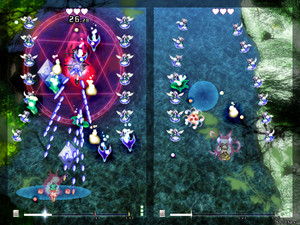
© Team Shanghai Alice
So, two things can be taken away from the perception of the Japanese gaming community. First, if you’re going to be an “indie” studio or a “doujin” studio, you’re probably not going to sign on with an established corporation to do so. It’s not like Shueisha is selling manga at Comiket, after all. In the U.S., the topic of what counts as an “indie title” has gotten fairly nebulous to the point where Dave the Diver is considered an “indie game,” even though it was published by multinational South Korean company Nexon (the publishers of major titles like the aforementioned Blue Archive or MapleStory). I’m not going to tell would-be indie devs in the U.S. that you should just suffer if you can’t afford to carry your game to term without external support up to and including larger established studios, but we can’t pretend that signing with a major company is the only option for folks who work independently. Just look at Toby Fox‘s Undertale or Deltarune, or indeed, at ZUN himself. ZUN still makes all of the mainline Touhou games by himself, from the programming to the music to the character design. There have been Touhou spinoffs, like several gacha games produced by Aniplex, or Taito‘s Touhou Spell Bubble, but the mainline games are all produced by ZUN and ZUN alone.
The other aspect is that there’s a degree of decorum that doujin work carries with it, one that many in Japan don’t see reflected in Palworld. Either because of Pocketpair’s past statements or their past releases, the perception has largely been that Pocketpair hasn’t behaved in good faith and is crying over their own spilled milk. Again, this should not be considered any kind of incrimination upon Pocketpair, but it is an interesting contrast to many of the reactions I’ve seen from American fans.
Ultimately, it is entirely too soon to make any major decisions over guilt or culpability. The news is scarcely over a week old, at the time of writing, and ultimately it is entirely out of our hands. Few of us have any actual legal training, and fewer still actually understand Japanese law (which this will be tried under). We don’t even know what patents Nintendo is claiming that Pocketpair infringed upon. But it is important not to fall victim to simplified narratives one way or the other. Two things can be true: a big company can be heavy-handed while a smaller company might be hiding behind flimsy excuses after a history of behaving in bad faith. That shouldn’t be a hard notion for adults to grasp.
Sony State of Play September 2024
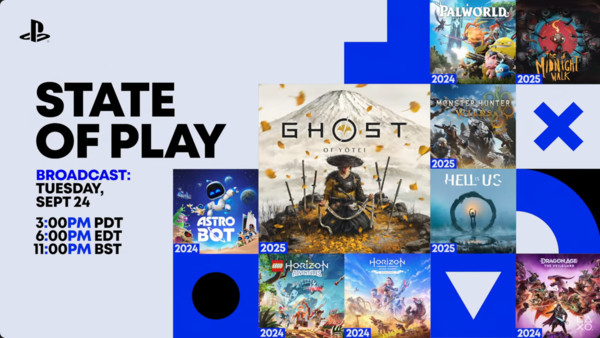
© 2024 Sony Interactive Entertainment LLC
Sony‘s not exactly swimming in goodwill these days, so the State of Play stream from earlier this week was rather… fraught. A combination of Sony‘s reputation for bemoaning their lack of first-party titles while endlessly remaking games from within the past decade hasn’t helped matters any more than the PS5 Pro’s $700 price tag. I waded into this week’s State of Play not sure what to expect.
First off, credit to Sony for redesigning the visual overlays for the State of Play. The whole format is very obviously lifted from Nintendo‘s Directs, and Nintendo has done a lot to make Directs “pop” in people’s heads, from Satoru Iwata pioneering the “Directly to you” gesture that he used to open every Direct to the modern Directs having hosts snap their fingers before every announcement in reference to the Nintendo Switch’s “snap” logo. The State of Play… didn’t quite have that? The best they could come up with is having a blue overlay instead of using Nintendo‘s red. The current look evokes the Cartoon Network‘s checkerboard design, but at least it’s incorporating the PlayStation‘s iconic symbols (△, ◯, ╳ and ☐). It’s a good look, I think, but one that definitely invites a much more animated attitude from hosts I think.
Also: holy crap, I owe Nintendo Fans™ an apology. I’ve joked for a long time that Nintendo Fans™ will only fast-forward past all the Japanese RPGs in a Direct to look for any news on Zelda or Mario; I did myself the disservice of poking my head into the circus that was the YouTube top chat for the State of Play and saw an absolute warzone. I have never, ever seen such a miserable audience! They didn’t like anything being displayed! I get it, folks are really frustrated about Sony ignoring Bloodborn or other old franchises, but even when neat stuff was being shown like the Soul Reaver remasters or the Lunar collection, folks were constant Debbie Downers. The audience only got worse when Director of Third Party Relations Shawne Benson or Content Communications Specialist Kristen Zitani were onscreen; audience members lobbied all manner of transphobic comments and claims of being diversity hires at the two of them over their appearances or voices. Like… that’s the attitude you show to companies? What are we doing here?
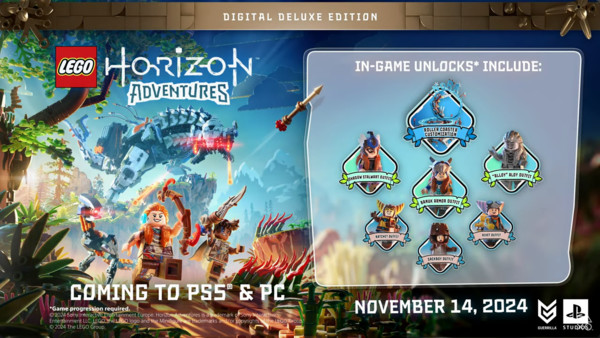
© 2024 Sony Interactive Entertainment LLC
Anyway, what was revealed at the State of Play? Well, a lot of games are outside of our jurisdiction, so we’ll have to give them the quickest of once-overs—a shame because I was shrieking when I saw that the Soul Reaver games were getting remasters. I love those games so much. While I’m not too keen on the remastered designs (the extra detail doesn’t do Melchiah any favors, I recoil to think what will have happened to Zephon), I’m happy that these games are seeing a comeback and I hope lots of people enjoy them. There isn’t much like the Legacy of Kain games, courtesy of Amy Hennig’s phenomenal writing nor the stellar cast and performances including actors like Michael Bell, Tony Jay, and Simon Templeman. Horizon: Zero Dawn is getting remastered, which isn’t too exciting—and it’s releasing this October 31st, 2024, smack dab in a storm of bigger game releases like Dragon Age: The Veilguard, Mario & Luigi: Brothership, Call of Duty: Black Ops 6 and Assassin’s Creed: Shadows. If anything, the Horizon games have a better reputation for getting overshadowed by bigger games. We also saw more news on the LEGO: Horizon Zero Dawn, which is set to include several funny outfits based on Ratchet, Sackboy, and a few other Sony characters. The Midnight Walk is doing a great job of looking like a stop-motion game without actually being stop-motion, but I’m not sure if the option of playing it in VR will be of much use. Hell is Us looks interesting, if a bit run-of-the-mill post-apocalyptic. ArcheAge Chronicles is a spin-off of an MMORPG that I know went off the rails after its much-beloved beta release; it looks okay, at least? I haven’t played a Dragon Age game since dipping my toes into Origins way back in 2012, I’m surprised The Veilguard seems to borrow so much from Mass Effect 2‘s battle system. It looks fun, at least. Hitman: World of Assassination is another VR title; it seems fun. Towers of Aghasba looks like Breath of the Wild with some of Dark Cloud‘s town-building Georama system mixed in, I’m intrigued. Alan Wake II is getting some DLC that ties it in a bit closer to Control, I’m looking forward to it. Also, Astro Bot is getting some extra DLC stages with new bots to collect, including bots based on Helldivers 2 and Eve from Stellar Blade. And finally, Dino Crisis… is coming to the PlayStation Classics program. It’s not quite what fans would’ve hoped for, but at least it’s a baby step towards the new game folks actually want…?
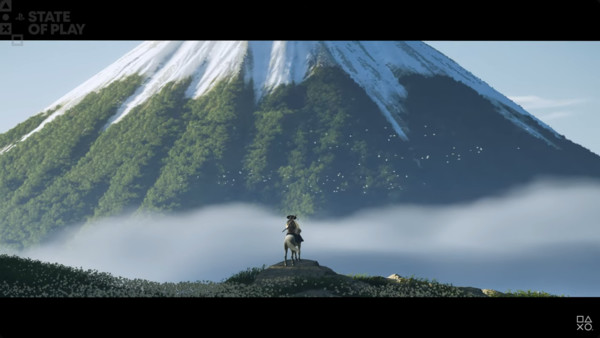
© Sucker Punch
I wanna give some special attention to Ghosts of Yōtei! I was somewhat down on Ghosts of Tsushima when the game was originally revealed (it felt like another bland prestige game), but after seeing some clips of it with the black-and-white filter I can appreciate it as a good tribute to Akira Kurosawa‘s classic samurai epics. Ghosts of Yōtei takes place several centuries later, featuring a protagonist out for revenge in the Hokkaido region. Their bloodthirst is represented by a wolf serving as their… companion? Pet? I dunno, Jin came off as mostly associated with foxes, so I feel like it’s noteworthy that the protagonist in Ghosts of Yōtei is associated with wolves. There’s also some grousing because the protagonist of Ghosts of Yōtei is a woman because people haven’t seen Lady Snowblood. Oy. Shout-out to Erika Ishii for getting cast in the starring role for Ghosts of Yōtei, I’m genuinely interested in picking the game up. There’s also a fascinating thread from a scholar on Twitter going over the history of the Hokkaido region, specifically during the era where Ghosts of Yōtei takes place and how the Ainu people might factor into the story.
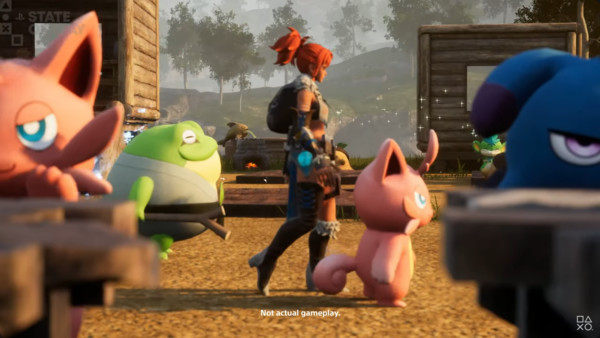
© Pocketpair, Inc.
Okay, so, about the games we can talk about! And, uh… oof. Sony announced that Palworld will be released for the PS5 this week. Within the week of the announcement of Pocketpair’s lawsuit. Exclusively in the U.S., however. Bad timing, can’t be helped. But also, rather bold decision to have the entire trailer be cinematics and not actual gameplay. Pocketpair was at least trying to lean in on its unique worldbuilding (what little there is) by focusing on the ancient Towers in the Palapagos Islands, while also showing a handful of its NPCs. Y’know, the NPCs from Palworld that everyone knows and loves: Marcus, the drug dealer; Lily, the religious fanatic; Zoe, the leader of the poachers; and Victor, who looks like 9S and I guess is trying to make the Palworld equivalent to Mewtwo. I have friends who play Palworld, I had to Google the names of everyone besides Zoe. But even in cutscenes, none of the assets look like they even belong in the same game; the close-up on Marcus made me wonder what was wrong with his face, and the Trainer stand-in just clashes aesthetically with her Pal partners on every level. Oh, Palworld…
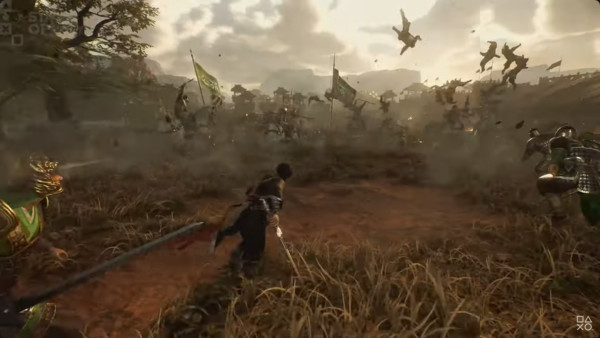
© KOEI TECMO GAMES CO., LTD.
Moving on; the last time I saw Dynasy Warriors: Origins, I wasn’t wholly impressed. It looks great, but the game is so desaturated; the Dynasty Warriors games are known for their flamboyant presentations and their bright, colorful Three-Kingdoms-era character designs. I still don’t appreciate the game making Lu Bu look like he came out of Man of Steel. Coloring aside, Dynasty Warriors: Origins is looking good, at least. It’s using the open-world mechanics to good effect, with things like sneaking through rivers with your troops or real-time traipsing through castles during a siege. And the attacks are as flashy as ever, with scores of enemy infantry getting swatted away like flies with every swing of your bo staff. I still wish the game had just a bit more saturation to it… but it’s looking good.
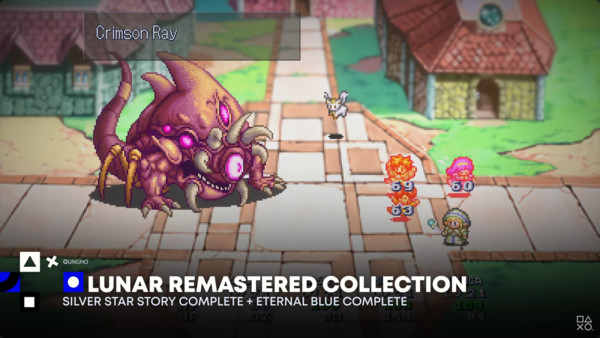
© 2024 GungHo Online Entertainment America, Inc.
The Lunar games are back! I’m heartbroken that this isn’t a bigger deal? The Lunar series has been dead and gone for a while, no thanks to the abysmal failure of Lunar: Dragon Song on the Nintendo DS (a game where you lost HP for running and where you had to swap between earning money or experience from battles). But the original Lunar games are still massively beloved titles; releasing in the era of game consoles beginning to adopt CD formats, Lunar impressed with its animated cutscenes and recorded vocal performances. The singing in Lunar was a big deal at the time, although even now RPGs don’t seem to have much in the way of songs. (I remember Suteki Da Ne being a big deal for Final Fantasy X back in the day, not many RPGs have used a song in a similar way since.) The games take place within a millennium of each other; the first detailing the adventures of Alex as he endeavors to inherit the title of Dragonmaster and defeat a fallen hero, the latter, the story of Hiro and the otherworldly Lucia as they work together to defeat the evil Zophar.
As mentioned earlier, this is the first time in a while that the Lunar games have been made available. Part of the issue is the localizations for the games; many people still shake their fists at Working Designs courtesy of Vic Ireland essentially squatting for the rights to the dubs of these games. Apparently, the Genesis Mini 2 had to forgo featuring the Lunar games in English territories because he was charging too much for them. It’s for the best, apparently, those old vocal tracks have a lot of 90s-era dialogue that is not acceptable by today’s standards. Apparently, the new translation features entirely redone English voice acting, in addition to graphical updates like widescreen mode and other quality-of-life improvements. I feel like it’s a safe bet that it’ll eventually leap Steam and the Nintendo Switch, but for now, the Lunar Remastered Collection arrives this Spring 2025.
Speaking of RPGs, we have confirmation that Fantasian: Neo Dimension will also launch on the PS5 this December 4th. This December 12th, we’ll also see an extra expansion pack for Sonic X Shadow Generations: a level pack featuring Shadow from Sonic the Hedgehog 3. Yes, complete with Keanu Reeves‘ voice acting! The pack will feature levels inspired by the movie and is included with the game’s digital deluxe version, available for preorder now. We also got a neat cinematic trailer for Monster Hunter Wilds, along with its release date: February 28th, 2025. Not to gloss over Monster Hunter, but all that can be said about it has been said and I don’t have much else to say about it. I love Monster Hunter! I’m kinda bummed that they went back to the kinda bland-ish Monster Hunter World-esque aesthetic after the inspired Japanese setting in Monster Hunter Rise, but the game looks great and I love the updates they’ve made to the weapon system. If Christina Vee’s voice is in there, either for the hunters or for the Palicos, I’m making a beeline for it. Thanks.
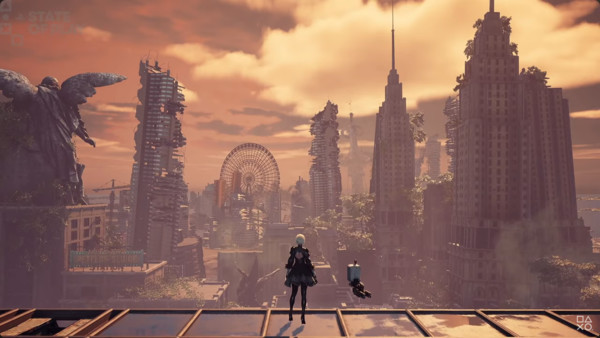
© Shift Up, Square Enix
And the final bit of news is a cute bit of synergy. Way back when Stellar Blade‘s story was first detailed, we all had a good laugh at its similarities with NieR: Automata. I was worried for a bit that Stellar Blade wouldn’t be able to get out from under NieR‘s shadow… but it managed it. I mean, I do wish it was under better circumstances, but at least it’s remembered as a fun game. At any rate, Yokō Tarō‘s hobby of liking money opened the door to SHIFT UP somehow getting a neat Stellar Blade/NieR: Automata crossover, allowing you to (hopefully) play as 2B in the world of Stellar Blade. Hopefully, this means Kira Buckland comes back to voice her, it’ll be weird to hear anyone else but her voicing our favorite combat-type YoRHa unit. Stellar Blade also (finally) has a photograph mode where you can pose and dress Eve and her friends to your liking. It’s nice that more and more games are doing this, but also I don’t blame games for shipping without photograph modes—they’re fun, but I think it’s more important that a game runs well at launch than it has a ton of fun extras. Now, where’s that Stellar Blade/Goddess of Victory: NIKKE collab, SHIFT UP…?!
And that was the Sony State of Play. Honestly, I’m impressed—the Soul Reaver news alone was enough to make me happy, adding Lunar and Ghosts of Yōtei to the mix just sweetens the pot.
Aaand now we have another stream to cover because State of Play streams like coming with their friends!
Level-5 Vision To The World’s Children 2024 Stream
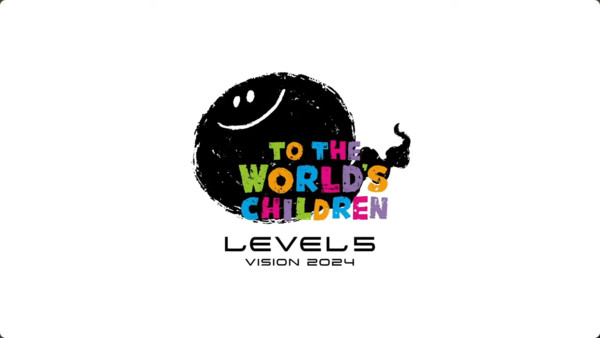
© Level-5
Ah, Level-5. Creators of some of the most beloved RPGs out there like Dark Cloud and Dragon Quest IX: Sentinels of the Starry Sky. The folks who have created such Japanese power-house franchises as Inazuma Eleven and Yōkai Watch. And… a studio that might actually be in a lot of trouble, as it’s been a bit since they’ve had a major hit in the U.S. A lot of folks have noticed that they tend to drag their heels in getting their major franchises stateside in a timely manner (as with Inazuma Eleven and Yōkai Watch, which were already cooling off in Japan by the time their first entries were getting released abroad). Meanwhile, there isn’t much buzz about one of their more recent titles, Megaton Musashi W: Wired, available now on Steam and Nintendo eShop. Earlier this week, they held their own Direct-styled stream detailing some of their upcoming projects in the U.S. They were even nice enough to subtitle it for American fans. But the actual announcements were a mixed bag.
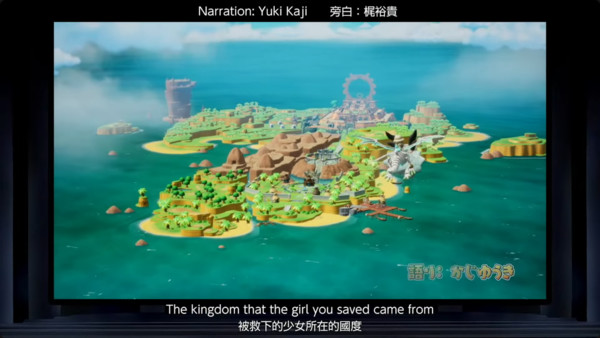
© LEVEL5 Inc.
Kicking off the announcements was the news that Fantasy Life i: The Girl Who Steals Time has been delayed, with a new release date set for April 2025. The reason for the delay? Level 5 is hard at work designing a massive open-world setting for the game. It’s cute that the island is shaped like a dragon, and Fantasy Life i is also adding a few new “Lives” (read: character classes) to the game that’ll synergize with the old ones in new ways. The new open-world setting means there will need to be new means of traversing the environment, including mounts and the ability to climb and swim. The additions look interesting, at least, but I have to wonder why these all came out at almost the eleventh hour…
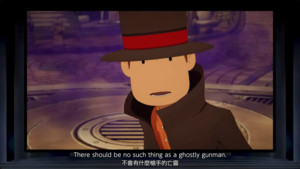
© LEVEL5 Inc.
There was also news about Professor Layton and the New World of Steam. Begging folks’ pardon, but I’ve never actually played a Professor Layton game before. What I do know is that they’re endlessly charming puzzle games about a man in a snazzy hat and the kid who accompanies him. I also know that one of the recent games, Layton’s Mystery Journey: Katrielle and the Millionaires’ Conspiracy, was about Layton’s daughter—and I have to wonder why she doesn’t seem to factor in this new game. At any rate, the good professor finds himself in a Steam-powered boom town in the United States, haunted by the ghostly King Gunman Joe. As usual, there’s a mystery at the heart of this curious town, and Layton is on the trail of the answers. Level-5 is looking to include the most puzzles in a Professor Layton game ever in this title, which might be why it’s been given a vague “2025” release window. Meanwhile, there was a cute music video detailing Level-5’s new mystery game, DECAPOLICE; it’s about a team of kid detectives training to become investigators in a VR simulation of their actual city, named the Decasim. Harvard Marks, our protagonist, is hot on the trail of the person who murdered his mother, who he believes is connected to the Decasim. It’s a fascinating game and setting… but it was originally announced back in 2022, and was originally slated for release last year. And it had already had its release date bumped up to this year. The trailer gave it a new release date of 2026, to pour more salt into the wound. Now, to be fair, part of the issue is that Level-5 wants there to be an anime tie-in,
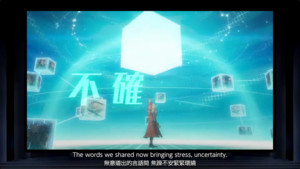
© LEVEL5 Inc.
plus they want to expand it into an open-world game… but folks are understandably miffed at how long this one has taken to release. I can’t blame Level-5 for wanting all of their bases covered—that’s how Inazuma Eleven and Yōkai Watch became such major powerhouse franchises for them, after all. But I have to wonder if they’re not putting the cart before the horse on this one… What’s more, Level-5 still has plans to release DECAPOLICE on the PS4 (as well as Nintendo Switch and Steam) as far off as 2026. By then, we’re almost guaranteed to have the Switch’s successor in our hands, and you’re still releasing games on an eleven-year-old console? To be fair, that does speak to the PS4’s popularity and viability as a platform (and the PS5’s shaky footing), but I feel like focusing on fewer SKUs might be in Level-5’s best interests.
Next up was the aforementioned Megaton Musashi W: Wired, which I think is fair to say has been extremely poorly promoted by Level-5 in the United States. For one thing, the game has been out for a while now—and nobody is talking about it. It’s a fun mecha-based action game, which ought to be right up anyone’s alley (especially for folks who need that Super Robot Wars itch scratched but need more visceral gameplay)… but, uh, people can’t play a game they don’t know about. I don’t even think folks watch the tie-in anime for that one. I know the tie-in exists because ANN auto-tags the Megaton Musashi title with the corresponding series from the ANN Encyclopedia, and no other reason. That’s not good, Level-5! And it’s a real shame because the combat system in Megaton Musashi W: Wired looks to be a lot of fun. At any rate, Level-5 announced a new update for the game: a Battle Royale mode. W: Wired required you to upgrade your robot to play against other people online; with the Megarobo Batroseum, you can just pick a character and duke it out, G-Gundam-style. And there’s plenty of old-school hot-blooded action to be had because Level-5 dug deep for some old-school super robot collaboration cred…
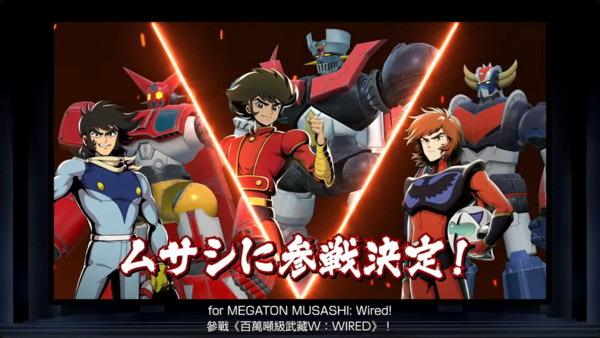
© LEVEL5 Inc.
Yeah, they’re getting Getter Robo, Mazinger Z, and UFO Robo Grendizer in on this game. If that doesn’t sell Megaton Musashi W: Wired to you, I don’t know what will. Both of these updates arrive this November.
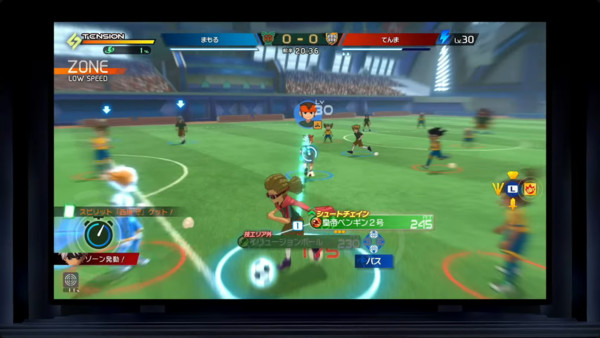
© LEVEL5 Inc.
Hey, how about Inazuma Eleven: Victory Road? A hotly-anticipated soccer RPG, it was originally announced as Inazuma Eleven Ares way back in 2016 (as well as tied into the anime of the same title). It’s been delayed numerous times since and was originally slated for release this year. We even had a beta test earlier this year, with a record-breaking 2 million downloads (hey, folks in Japan love Inazuma Eleven). The good news is that Level-5 wants this to be their most ambitious Inazuma Eleven game ever, one that not only ties into the franchise‘s 15th anniversary but is also a game you can pretty much play forever. The plan to have a series record of 5,200 playable characters from across the entire series leans into that, as well as the option to play campaigns that hearken back to older games in the series. You’ll even be able to design your own in-game avatar and design your own in-game village where other players can log in for friendly soccer matches. The town-building mechanic even reminds me a little of the Georama system from Dark Cloud. All this, plus the usual team-building mechanics that make teamwork even stronger among your party members (and fuel tons of fanfic in Japan).
And it’s coming out in June of 2025. Because, of course, it is. God willing, it might even be released then, and you’ll be able to play it on PS4, PS5, Steam, Nintendo Switch, Android, and iOS.
See why I said this stream was a downer for fans?
Oh, but don’t worry! If you need another Inazuma Eleven title, Level-5 has you covered! As part of the festivities for Inazuma Eleven franchise‘s 15th anniversary, Level-5 also announced Inazuma Eleven RE, a complete remake of the original game that started it all! It’ll even introduce a completely revamped gameplay system that ditches the Nintendo DS’s stylus. And it’ll come out in 2026. You can always just take up real-life soccer in the meantime…?
So, there was one more game that was announced, but allow me a moment for some preamble. So, Yōkai Watch was Level-5’s big moneymaker for a while. It was even out-performing Pokémon in Japan for a moment there, such that GAME FREAK even started adopting elements from Yōkai Watch like character design choices (Pokémon and characters becoming much more round and colorful, especially in the anime), integrating physical toys with Pokémon Sun/Moon (the Z-Ring and its crystals, a la the titular Yōkai Watch and its Yokai Medals), flashy Z-Move super-attacks (a la the Soultimate moves), and dances. Yōkai Watch had a lot of catchy dances as part of the Yokai summoning jingles that the kids couldn’t get enough of, which Pokémon incorporated as part of the Z-Moves. For further proof of how integral the dances were to Yōkai Watch, I am forced to revive the “Gera-Gera-Po” brainworm that’s been sleeping in everyone’s skulls for the past few years. (It was even maintained for the American Yōkai Watch adaptation that aired on Disney XD.)
Why did Yōkai Watch fall off? Well, Level-5 mostly did it to itself—the franchise burned bright, but it was burning fast—and Level-5 didn’t help by releasing the Yōkai Watch Model Zero, an upgraded Yōkai Watch toy… that was incompatible with the old Yokai Medals. If you had a full collection of the Medals, congratulations: the new toy wouldn’t play the full jingle for them. You effectively had to collect a whole new set of medals to use on the new toy, including the new Medals for old Yokai. Plus, Level-5 was burning through Yōkai Watch generations like they were candy; if you thought the yearly schedule for Pokémon games was bad, Yōkai Watch was worse. That was key to a lot of Yōkai Watch‘s problems, now that I think of it; while I’ve softened on Yōkai Watch a ton in the ensuing years, it’s funny that people pointed to it so much as the Pokémon killer because of how much worse it was about certain things people already disliked about Pokémon. Hate how so many Pokémon are so similar to each other? Yōkai Watch padded out its roster with even more literal recolors of Yokai (all the Jinbanyan variants will make you run screaming back to Dedene). Hate how kid-oriented Pokémon is? I’m not gonna claim this is a flaw, but it should be noted that Yōkai Watch‘s demographic skewed even younger. Hate how the Pokémon anime never let Ash grow up? The Yōkai Watch anime was entirely episodic, with two shorts per episode. Some of these didn’t even center on protagonist Nate, some of them just dealt with some of the other Yokai like Komasan having misadventures. (Of course, I’d take a bullet for Komasan.) Add in how innately Japanese Yokai were as a concept (hence why they were branded as “Yo-kai” in the United States) and how the U.S. adaptation sidestepped it all, and the series was always going to have a rough time even if it hadn’t taken so long to actually release stateside.
Now, all this isn’t to say that Yōkai Watch was a failure; I think there’s a lot to enjoy about Yōkai Watch (again: Komasan), and I think it speaks to GAME FREAK‘s willingness to change with the times (that people claim they don’t have) that they were willing to shift Pokémon to take more cues from Yōkai Watch to appeal to the new generation of kids. And Level-5 has been working hard at revamping Yōkai Watch to appeal to modern kids, too, but uh… I have concerns…
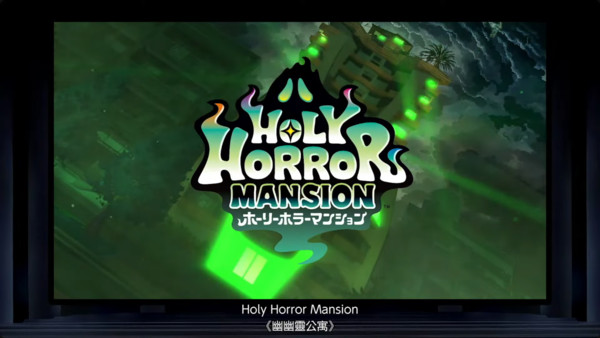
© LEVEL5 Inc.
So, Holy Horror Mansion bills itself as “concept next Yōkai Watch” (sic), and the parts are all there. Protagonist Ten Lordland is a kid who lives in an apartment complex owned by his grandmother, along with the rest of his family. After finding a magic camera that lets him photograph ghosts, Ten finds himself able to interact with three kinds of ghosts: green ghosts can possess objects, turning them into weird critters—essentially new Yokai themselves. Think of a possessed trash can, or a sentient maneki-neko statue. Blue ghosts allow you to combine objects to create new Chimeras, monsters made up of a mix of objects—the trailer throws out the idea of combining a pen and an apple to make an Apple-pen (put a pin in that one), or a cute dragon made out of a chain of clothespins. Pink ghosts can mess with the environment, making weird supernatural locations. With his magic camera and his ghostly friends, Ten fights against the Darkarymen of the nefarious De Ville Corporation, who distribute cursed monster items (think Needful Things as run by Youma from Sailor Moon). It’s a cute concept! Mixing stuff like spiritual photography with a great deal of imagination (animated junk) and some arts-and-crafts is a great way to capture the imaginations of children, and the idea of an evil mega-corp selling people evil junk like scales that make you lighter just by stepping on them is a great way to teach kids how to take care of and re-use stuff in their house instead of buying overly-expensive crap they don’t need, especially if they’re selling you something that’s over-promising something. But, uh, there are some issues here…
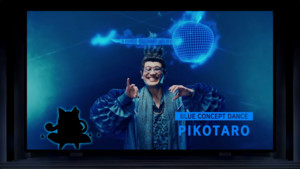
© LEVEL5 Inc.
So, remember when I said that Yōkai Watch was really big on dances? Well, they’re back in Holy Horror Mansion. That’s not a bad thing, mind! They look fun! Each color of “ghost concept” has its own dance. It’s here we can take out that pin from the “apple-pen” bit, though, ‘cuz, uh… they actually brought back Pikotarō (the actual “Apple-Pen” guy) to revive the “Apple-Pen” bit for the blue concept dance. Now, to be clear: this isn’t a problem. Get that bag, Pikotarō. It’s great to see he’s still doing his thing after seven years. But also… are kids in Japan seriously jamming to “Apple-Pen” in 2024? I’ll admit, that I’m not the most up-to-date in current trends, let alone Japanese trends… but this is definitely a choice that stuck out to me. The “green” and “pink” concept dances come from Santa and avantgardey, respectively, so Level-5’s search for star power continues. And that’s where the actual issue is; Level-5 really wants Holy Horror Mansion to be their biggest multimedia franchise yet. Hence the dances. It makes the ‘crafting’ angle make sense, nothing brings a family together like quality time making arts and crafts… but also, maybe make sure people actually like the game before you decide to circle the wagons around it? I love “Apple-Pen” as much as the next guy, but we don’t even know when Holy Horror Mansion is going to release, let alone what console it’ll be on. (The Switch’s successor is a super-safe bet, though.)
If that was it, things would be fine. I actually like the idea of Holy Horror Mansion a lot! The central themes are cute and could definitely work for a family audience. The concepts for the monsters are creative and will likely be far more successful with worldwide audiences, being that they’re animated household objects. I imagine that’ll be far more universal a theme than Japanese folklore—especially since a number of those craft creatures might be easily replicated by an enterprising kid after a trip to a dollar store. But, alas, Level-5 had to stick their foot in it…
Level-5 has been experimenting with generative AI for a while now, using Stable Diffusion to generate layouts for promotional images or experimenting with AI-generated voices in games. This sucks, make no mistake, especially since Level-5 games have a reputation for their striking art styles. It’s not like those guys don’t have a team of incredibly talented artists they could be consulting or nurturing instead. Eagle-eyed viewers have noticed that the Holy Horror Mansion teaser is also using a lot of AI-generated art; while these are just allegations, there are a lot of telltale signs of AI chicanery (inconsistent sizes for certain landmarks, weird details, etc). Mostly, Level-5 has already shown they’re willing to use AI for stuff; if it looks like they have, they likely did. This has taken the wind out of people’s sails about their excitement towards Holy Horror Mansion, and I don’t blame them. This sucks. While I can’t pretend to be the authority on how the general public feels about generative AI, it does seem to be a well that’s largely poisoned. It’s a shame that Level-5 is still featuring it so heavily.
And that’s where the Level-5 stream left us. Level-5 has lots of great creatives, but they can’t get anything out the door—and anything they do has the stench of AI surrounding it. It has a lot of loyal fans in the U.S. and Japan… but we all deserve better, man. Way better.
Let’s wrap up with some quick tidbits
That’ll do it for this week. This was a long column coming out at a difficult time, and we touched on a lot of difficult themes here. I appreciate you guys sticking with it this long, and I hope you guys find use in it. I love games, I think about them a lot and I dislike that people try to boil games down into simple truisms. This is a complicated industry held up by complicated people, and the folks who work trying to make the stuff that inspires us deserve a lot more consideration than quick-and-easy off-the-cuff assumptions. Nick gave everything he worked on a great deal of consideration, it’s the least I can do to try and follow in his footsteps. In other news: I will be swinging by the Portland Retro Game Expo this weekend! I need to find a copy of Izuna: Legend of the Unemployed Ninja that includes the instruction manual (the copy I have back in Puerto Rico didn’t). And who knows, I might find the Pyra/Mythra Amiibo or a Switch copy of VA-11 Hall-A at a reasonable price. If you guys see me around, don’t be afraid to flag me down. I’ve never had the privilege of meeting any of my readers before, and it would be nice to give folks a howdy-do. Be good to each other, I’ll see you in seven.
This Week In Games! is written from idyllic Portland by Jean-Karlo Lemus. When not collaborating with Anime News Network, Jean-Karlo can be found playing JRPGs, eating popcorn, watching v-tubers, and tokusatsu. You can keep up with him at @mouse_inhouse or @ventcard.bsky.social.
Source link
#Sonys #State #Play #Level5s #Worlds #Children #Week #Games

